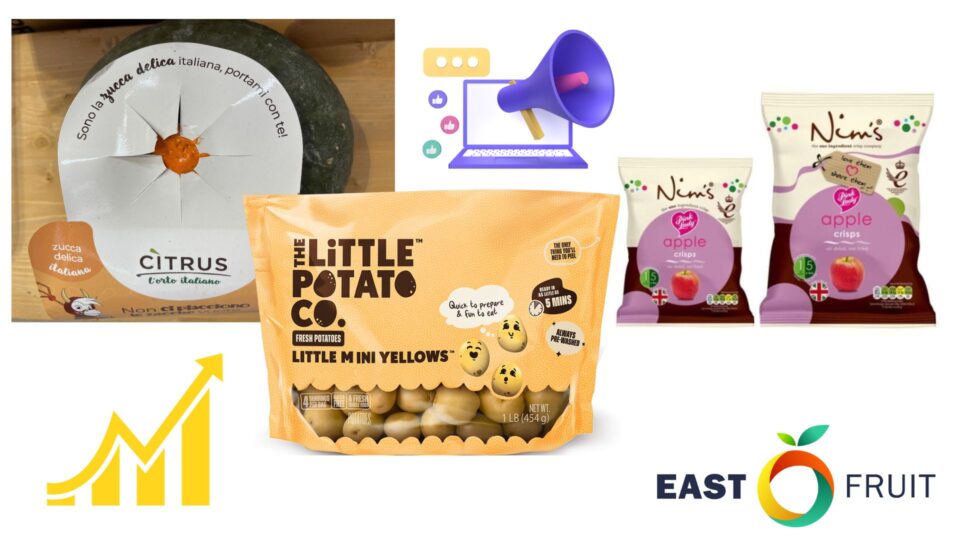What influences the marketing of fruits and vegetables? First of all, this category of products is poorly branded – in retail and markets, price tags for vegetables and fruits often contain only information about whether the products are local or imported, without indicating a specific manufacturer, which affects the low level of awareness about the origin of the product. At the same time, interesting examples of marketing of fresh fruit and vegetable products are increasingly found on supermarket shelves. EastFruit shares some cases.
“Pumpkin is the undisputed ruler of autumn, a versatile and excellent product for preparing both savoury and sweet dishes. However, it also needs proper promotion. “Nobody likes empty pumpkins! Our pumpkins are full of flavor and surprises!” – this inscription on the packaging of a cute pumpkin caught my attention in one of the Italian supermarkets. The pumpkin was small in size and sold for €2.49 each. On the top of the packaging it was also written that as a gift for each pumpkin purchased, the buyer would receive a 10 € discount for purchases in stores and online stores Toys Center and Fao Schwarz. Such information contained pictures from cartoons and looked very attractive, since pumpkins were sold on the eve of Halloween, when many parents organize a holiday for their children,” says Kateryna Zvierieva, development director of the Ukrainian Fruit and Vegetable Association (UHA), head of the website of the international information and analytical platform East-Fruit.com.
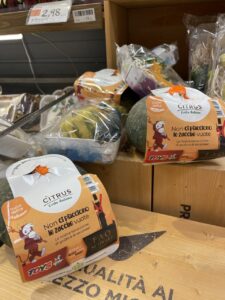
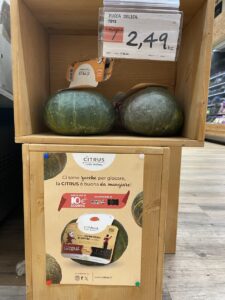
Also, each pumpkin contained information about its usefulness and the presence of a complex of vitamins A, C and E in it. Thus, the perfect marketing of healthy pumpkin has emerged to increase its consumption among not only adults, but also children.
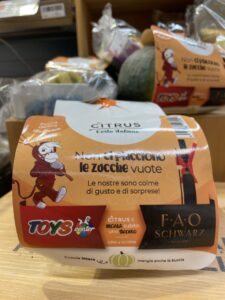
“It turned out to be an interesting example of collaboration. In this case, this is an example of cooperation between the fruit and vegetable brand Citrus l’Orto Italiano, which produces these pumpkins, and toy stores for children. With this initiative, the company notes, Citrus “aims to introduce everyone to the taste of Italian pumpkin,” says UHA’s development director.
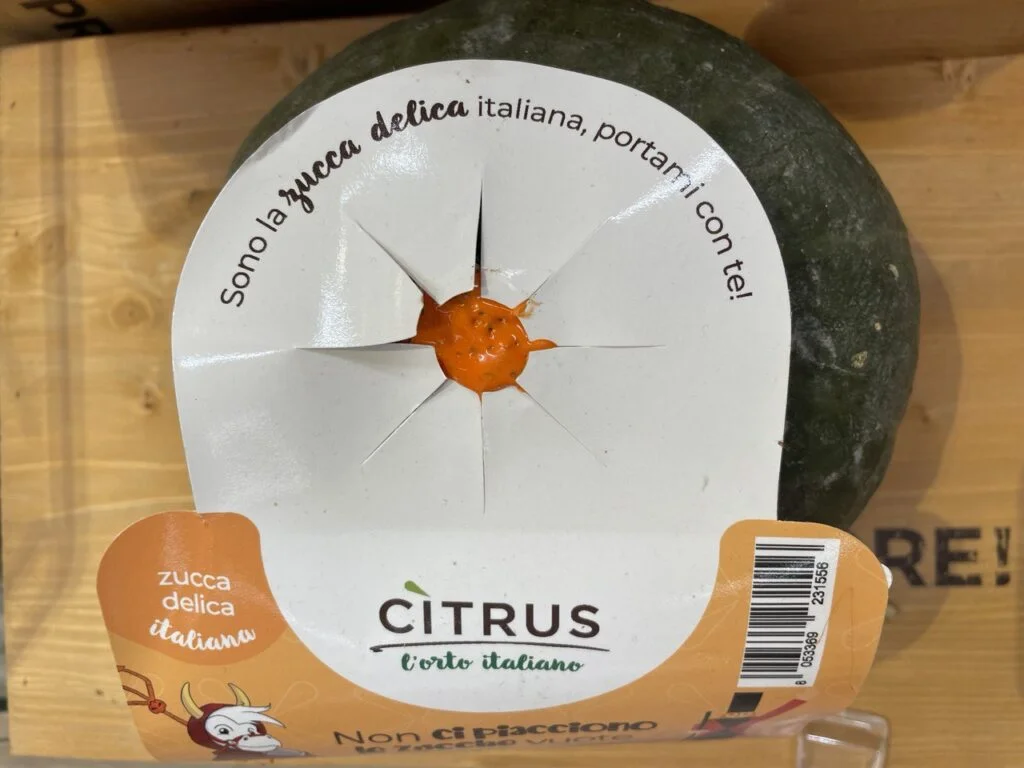
In the age of health consciousness, promoting fruit and vegetable consumption has become an important goal for agribusiness marketers.
Fruits and vegetables are an important component of a well-balanced diet, providing numerous health benefits. To successfully promote fruits and vegetables, marketers use effective strategies that hook the target audience and emphasize the need to include fruits and vegetables in the daily diet.
“In every business model, it is important to understand the target audience, the market and tailor marketing efforts accordingly. Different people in different countries have different preferences, habits and reasons for consuming fruits and vegetables. For example, parents may be more concerned about the health of their children, so they may choose fresh fruits and vegetables for them as a snack for school, while constantly working people will appreciate the convenience of ready-made meals, healthy fruit and vegetable snacks that are already actively presented on the market. Thus, in European supermarkets you can buy ready-made snacks for children for school, containing juice, carrot sticks, dried fruits and nuts. The price of one such snack varies from 1 to 2 €. And often such a set contains a toy for a child.
But adherents of a healthy lifestyle, who work a lot and eat on the run, choose healthy snacks with a small apple, carrots, nuts, goji berries, ready-made salads and dried fruits, which have a positive effect on the body and perfectly satisfy hunger. By conducting market research for a specific produce category and using segmentation techniques, marketers can create specific messages for each consumer group, increasing the chances that they will meet their needs and wants. The team of the international information and analytical platform EastFruit includes marketers, market analysts, as well as experienced PR specialists who help the product successfully enter the market, build the company’s reputation and satisfy the desires of consumers,” she notes.
One of the main marketing strategies is to make fruits and vegetables more attractive to consumers.
People are naturally attracted to visuals, and fruits and vegetables offer a pop of color. Thus, marketers often mix products according to color (for example, the well-known “traffic light” of different colored peppers), and also use “delicious” photographs and videos to demonstrate the natural beauty of the promoted products.
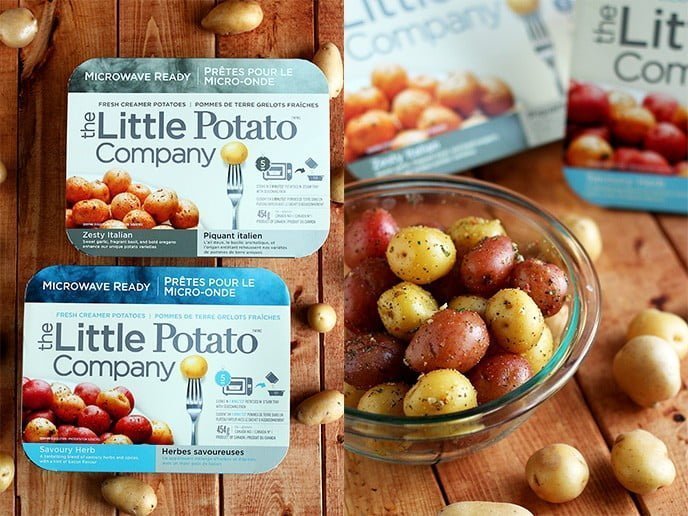
EastFruit has repeatedly written about ideas for promoting vegetables and fruits. So, in Canada, the Little Potato Company knows how to make money from small potatoes. Manufacturers focused exclusively on breeding, growing, packaging and marketing Creamer’s patented barbecue and frying potatoes. Little Potato Company is focused exclusively on carefully selecting and growing proprietary potato varieties that produce top-tier “mini potato” yields.
Another example is the famous Pink Lady apple, which can be purchased in convenient packaging. This is due to the fact that the company with the same name is actively developing the snack line and is focused on consumers who lead a healthy lifestyle and therefore are ready to make even a snack healthy. The company said that by offering apples in snack format, they are relying on schoolchildren and students as end consumers who will be interested in this product.
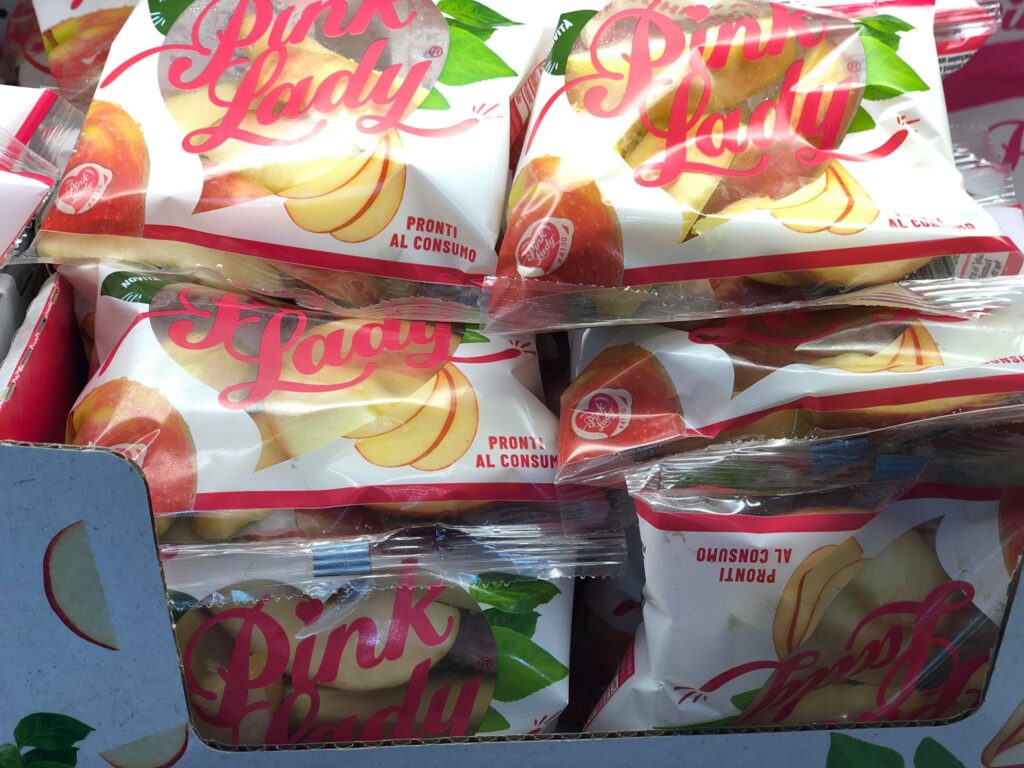 Promotion strategy on social networks and specialized websites
Promotion strategy on social networks and specialized websites
Using targeted advertising platforms, social media and websites where you can post product information and also post attractive food presentations and photos of fruit and vegetable dishes also play a significant role in promoting vegetables and fruits. By emphasizing the attractive aspects of fruits and vegetables, marketers positively influence consumer perception and increase interest in their consumption.
Another effective marketing strategy is to educate consumers about the many health benefits associated with fruits and vegetables. Many people are unaware of the wide range of essential vitamins, minerals and antioxidants that these foods contain. By disseminating accurate and understandable information, marketers can empower consumers to make informed decisions about their dietary choices. By using various communication channels such as online advertising, television advertising, online articles, collaborations with famous personalities, participation in festivals and exhibitions, marketers can raise awareness about the positive effects of fruits and vegetables on overall health.
This strategy creates a sense of urgency among consumers to consume vegetables and fruits, while also positioning companies as market experts and trusted sources of reliable information.
Marketers can also partner with local grocery stores, farmers markets, or even online retailers to ensure these products are prominently displayed and easily accessible. Strategic partnerships can also be established with schools, health care facilities, or community centers to promote fruit and vegetable consumption in educational programs or recreational activities. Offering discounts, loyalty rewards or promotional campaigns can stimulate consumer purchasing behavior and encourage fruit and vegetable consumption.




